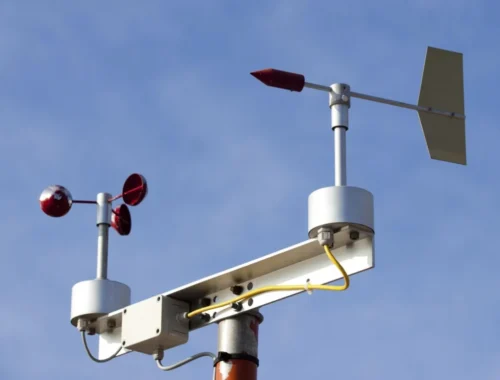The Story Behind the 52-Year-Old Woman’s K2 Summit
Masters Athlete
The Story Behind the 52-Year-Old Woman’s K2 Summit
A driven, patient, and injured Vanessa O’Brien becomes the oldest woman—and first American one—to summit the Savage Mountain
Aug 28, 2017
Aug 28, 2017
A driven, patient, and injured Vanessa O’Brien becomes the oldest woman—and first American one—to summit the Savage Mountain
Last month, 52-year-old mountaineer Vanessa O’Brien found the snow so deep on her K2 summit attempt that she forgot about her aching knee, recent shoulder surgery, and stress fracture in her sacrum. She didn’t think about becoming the oldest woman—and first American one—to ever summit the treacherous, 28,000-foot Pakistani peak, known as the “Savage Mountain.” Instead, O’Brien, a prolific mountaineer who also holds a British passport and was once a Morgan Stanley executive, thought about math not adding up.
“It was one step forward, slide down,” she remembers while navigating K2’s crazy-steep Bottleneck couloir. “And then another step to get back in place. Two steps for every one step.”
But on July 28, as part of a dozen-person summit party guided by outfitter Dreamers Destination, O’Brien defied all the creaks, pains, and numbers to summit K2—a mountain that, according to 8000ers.com, historically takes about one climber’s life for every four that successfully summit. No other K2 climbing team reached the peak in 2017.
Really, an argument can be made that O’Brien summited because she’s 52. “Some mountaineers feel they get better with age,” says Peter Hackett, a physician and longtime altitude expert serving as the director of Telluride, Colorado’s Institute for Altitude Medicine. “The belief has less to do with any physiological effects of aging and more to do with behavioral effects. Older climbers might pace themselves better, or perhaps have better hydration regimens, or better ability to sleep. They have wisdom.”
O’Brien, who in the last six years has summited five 8,000-meter peaks and completed the "Explorers Grand Slam"—summiting the highest mountains on each of the seven continents and reaching both North and South poles—agrees that experience and patience had plenty to do with the success of her third attempt at climbing K2.
“With mountaineering, there’s a lot of waiting. More and more young climbers have a hard time quieting their minds. They want constant stimulus and entertainment,” says O’Brien, who started mountaineering soon after the 2009 global financial collapse left her thinking there was more to life than the Type A work required to build banking empires. “Go into an expedition’s communication’s tent. It’s hilarious. All the millennial Sherpas and climbers are in there, on their screens.”
O’Brien, on the other hand, reaches a camp and chills out. Instead of unnecessarily tiring herself with excess high-altitude activities or acclimatization hikes, she’ll read books, drink tea, or do laundry. “I’m good at rearranging a tent,” she says.
She needed all her mental toughness ahead of her 2017 campaign up K2. A 2016 fall while climbing in Ecuador resulted in a damaged right rotator cuff that required two surgeries and extensive physical rehab. Recovery slowed O’Brien’s 2017 fitness plans, which included April’s Boston Marathon. She finished the race in slightly over five hours, despite a training-induced stress fracture to her sacrum that left her questioning whether she should even start. Her modified plan had been only to complete the marathon’s first mile, "but I just kept running and running,” says O’Brien. “Ultimately it wasn’t a time thing. It was a completion thing.”
This summer’s successful climb up K2 was another exercise in persistence, and mind and body control. The team, which was the last remaining on the mountain, left for the summit at a relatively late 11 p.m. under the false assumption that the lack of crowding and waits for fixed ropes would boost team speed. Instead, weather dragged out the attempt. Snow dumped on the 12 climbers, and wind heightened the threat of avalanche. The group consistently and laboriously broke trail, while often looking up at the accumulating snowpack.
O’Brien, who was climbing on a left knee that had been sore since the marathon, gave herself plenty of pep talks. Having been to Camp 3 in a previous expedition, she knew the difficulty of the terrain. She’d become a student of K2 climbing history, and had reminded herself that this was her group’s time: statistically, 58 percent of all K2 summits have occurred between July 20 and August 1.
Until the situation seemed utterly dire, she decided to stay quiet about the threat of avalanche from above. “We were all experienced, and thinking the same thing,” she says. “The waiting game became, can we keep closing in on the summit before the snow really piles up?”
There were other mountaineering metrics left unspoken. Like how research has shown that the probability of death among Everest mountaineers climbs dramatically by their mid-50s or so, and how an 85-year-old climber died in Everest base camp this past spring. VO2 max, which represents the highest amount of oxygen that a body can process, often begins a continuous taper after an adult reaches the age of 25 or 30. Even with O’Brien’s training, which in addition to the Boston Marathon included regularly ascending 1,210 stairs inside a 55-floor Manhattan skyscraper, she wasn’t as physically capable as younger members of her team.
“There’s no question she has incredible drive,” says Hackett, of the Institute for Altitude Medicine. “She had a strong team with her, and that improved her chances. Nobody, however, carries you up K2.” A very long 16 hours after they began, all 12 team members, including the oldest woman ever to summit K2, stood atop the peak.
Yet O’Brien knew she was only partway through the day’s journey. The exhausted team’s descent finished, seven hours later, in the dark. Reflecting on the effort, she believes that her team made mature decisions. She’s also old and humble enough to believe that prayers were answered, and that the group enjoyed some luck.
“No loss of life, no frostbite, no accidents,” says O’Brien. “But we definitely took additional risk, and that was personal choice. Terms like ‘threading the needle’ and ‘once in a lifetime’ come to mind.”
Next up for O’Brien, if she has her way? A trip to explore the Pacific Ocean’s ridiculously deep Marianas Trench.
You May Also Like

Dino Game: A Timeless Classic in the World of Online Gaming
March 22, 2025
Block Breaker: The Ultimate Guide to Mastering the Game
March 22, 2025